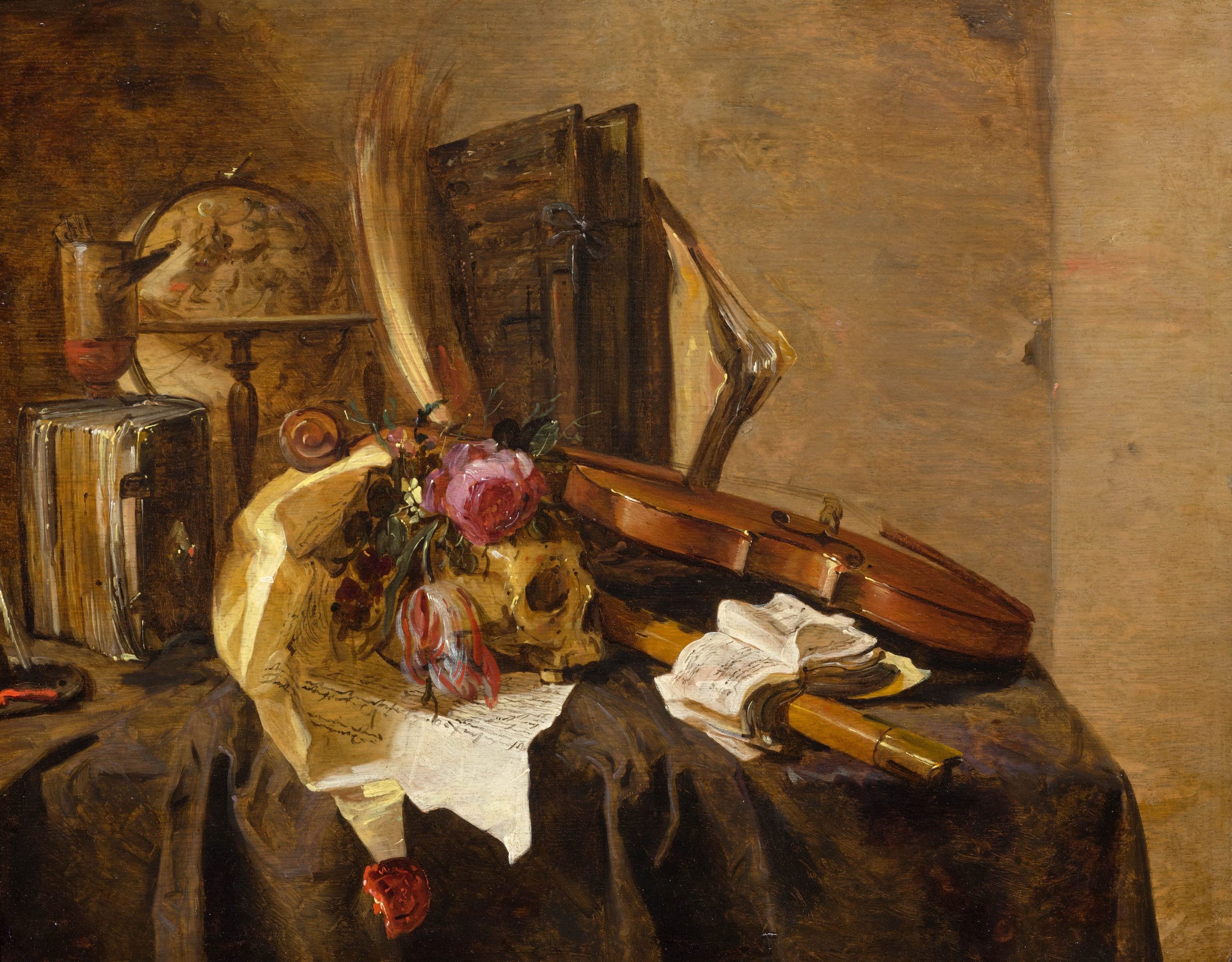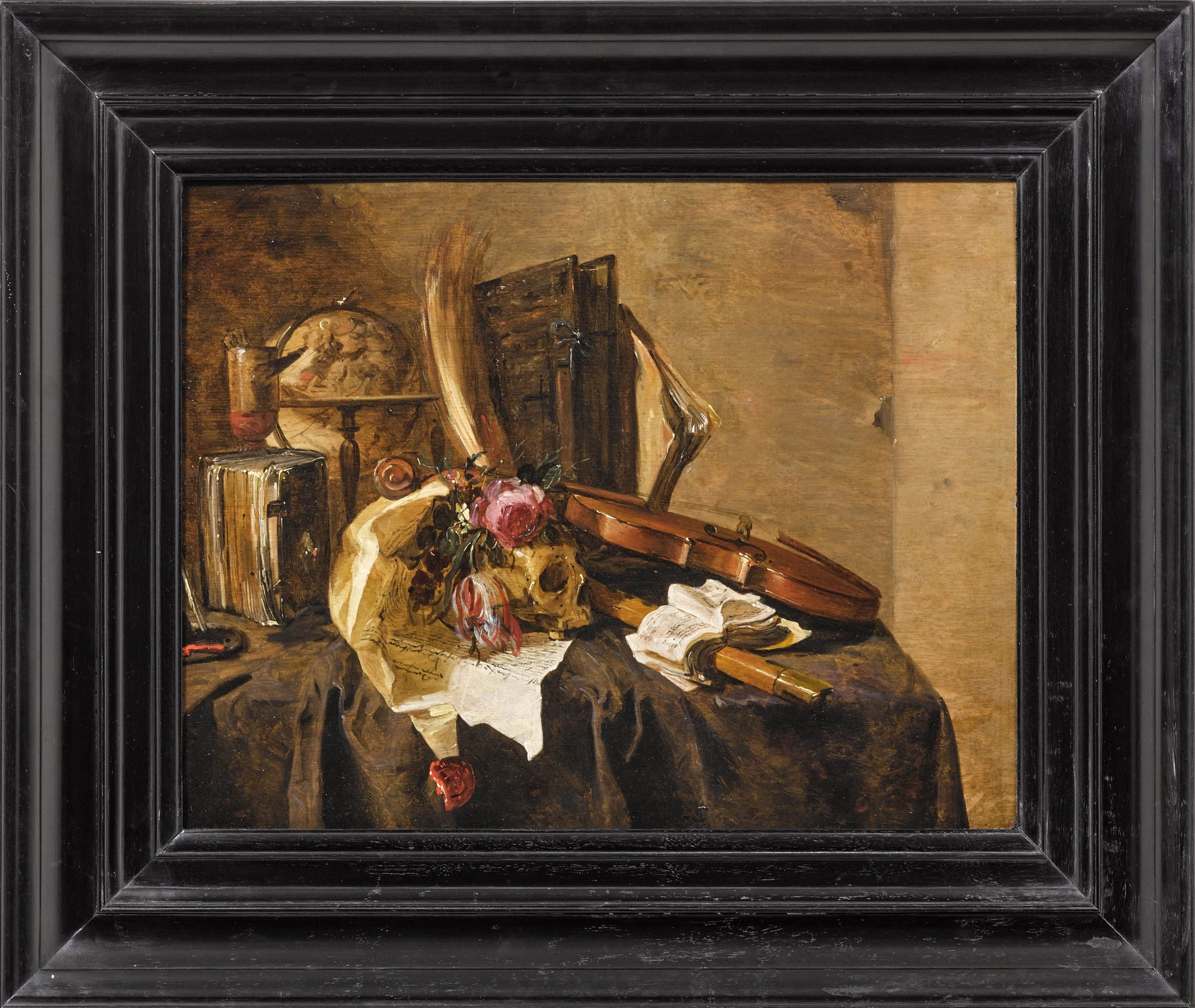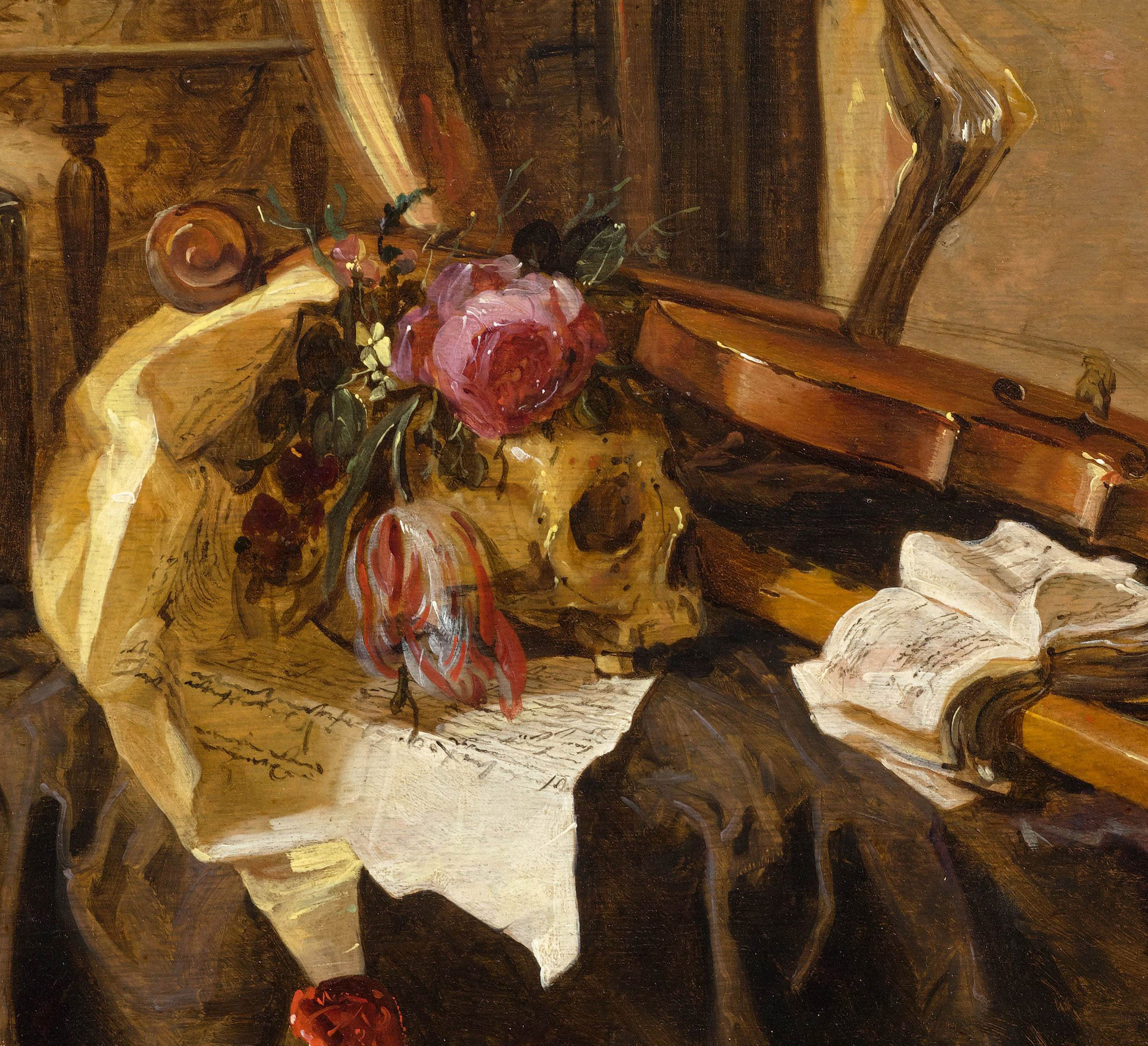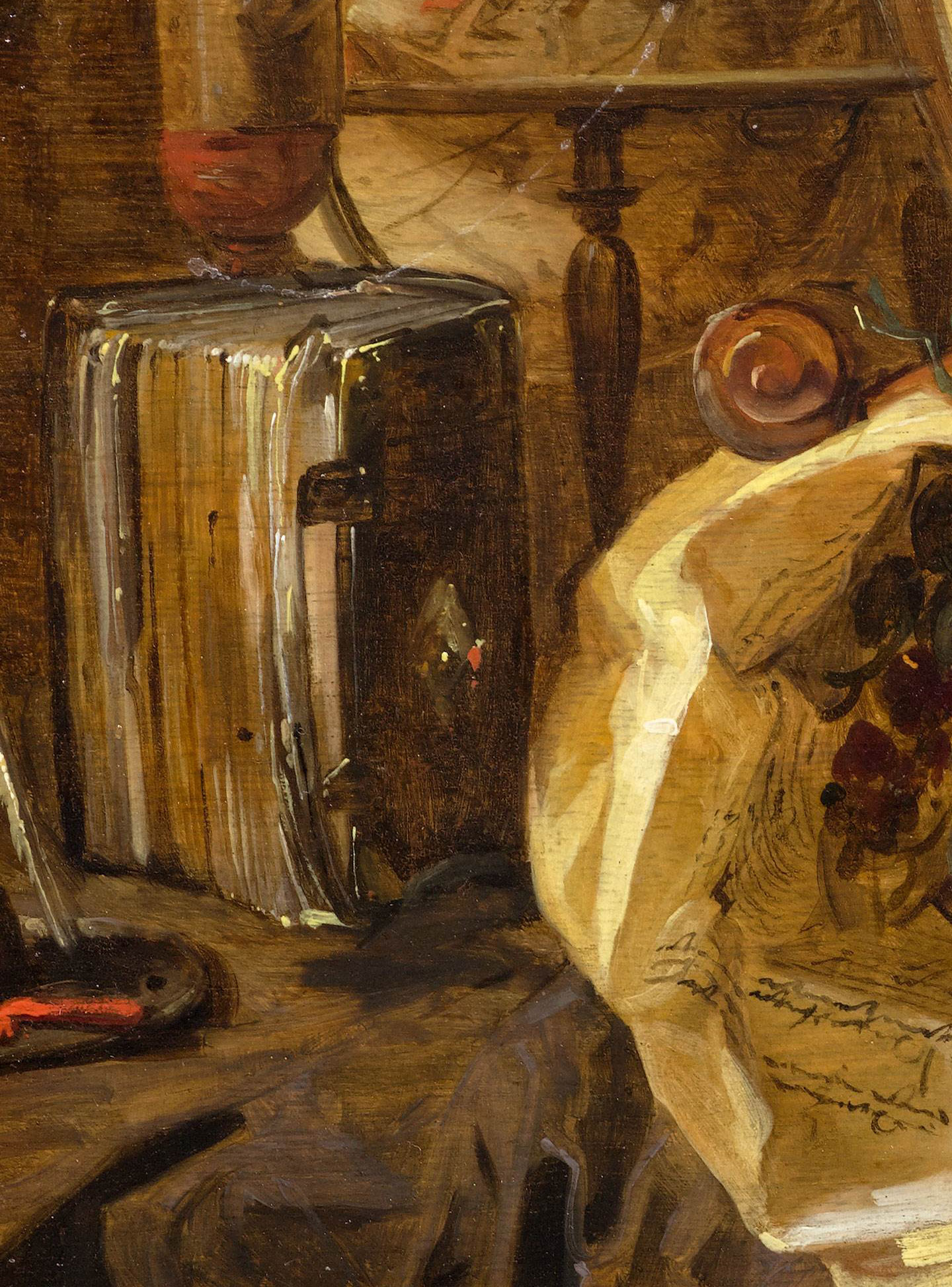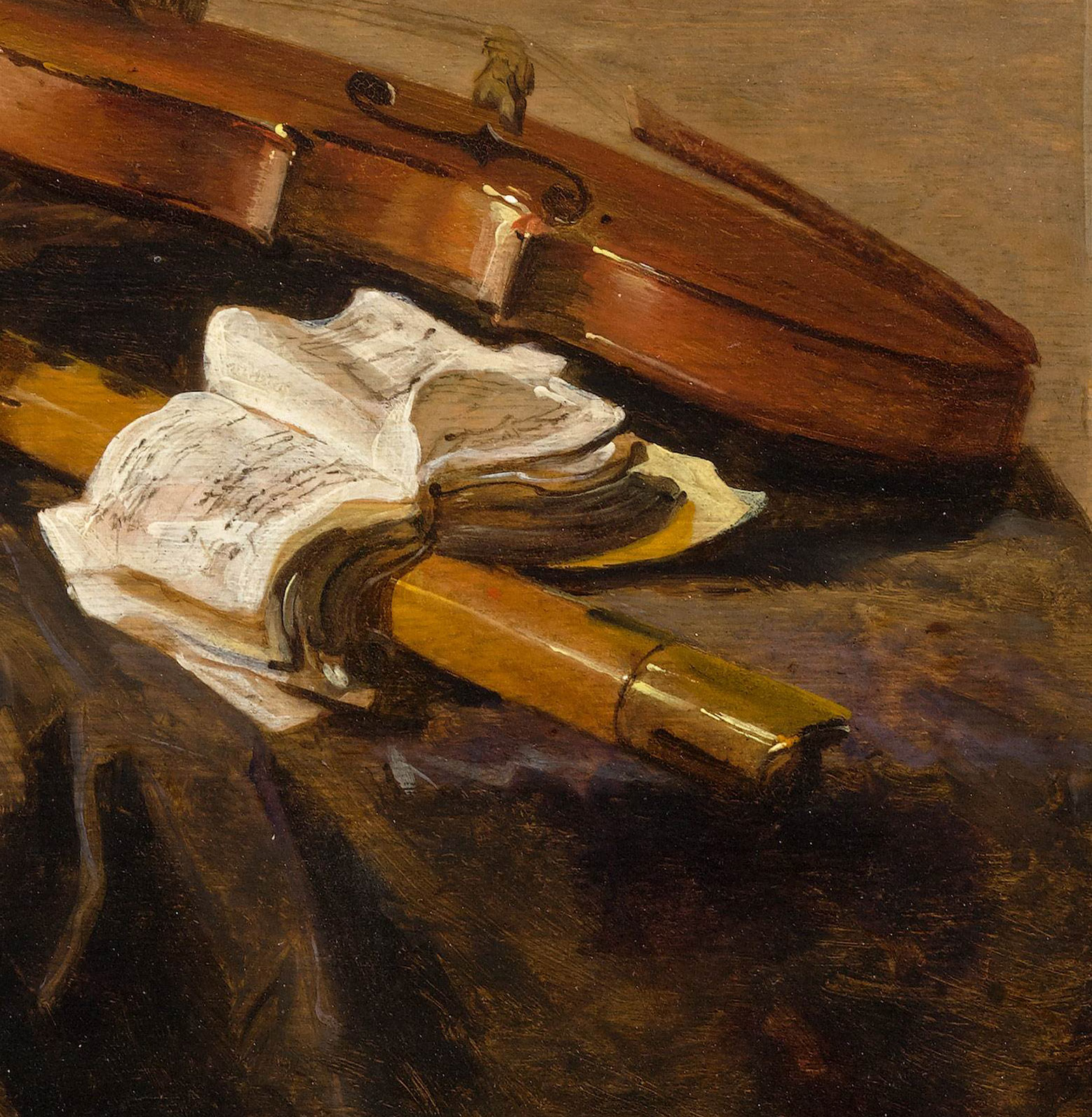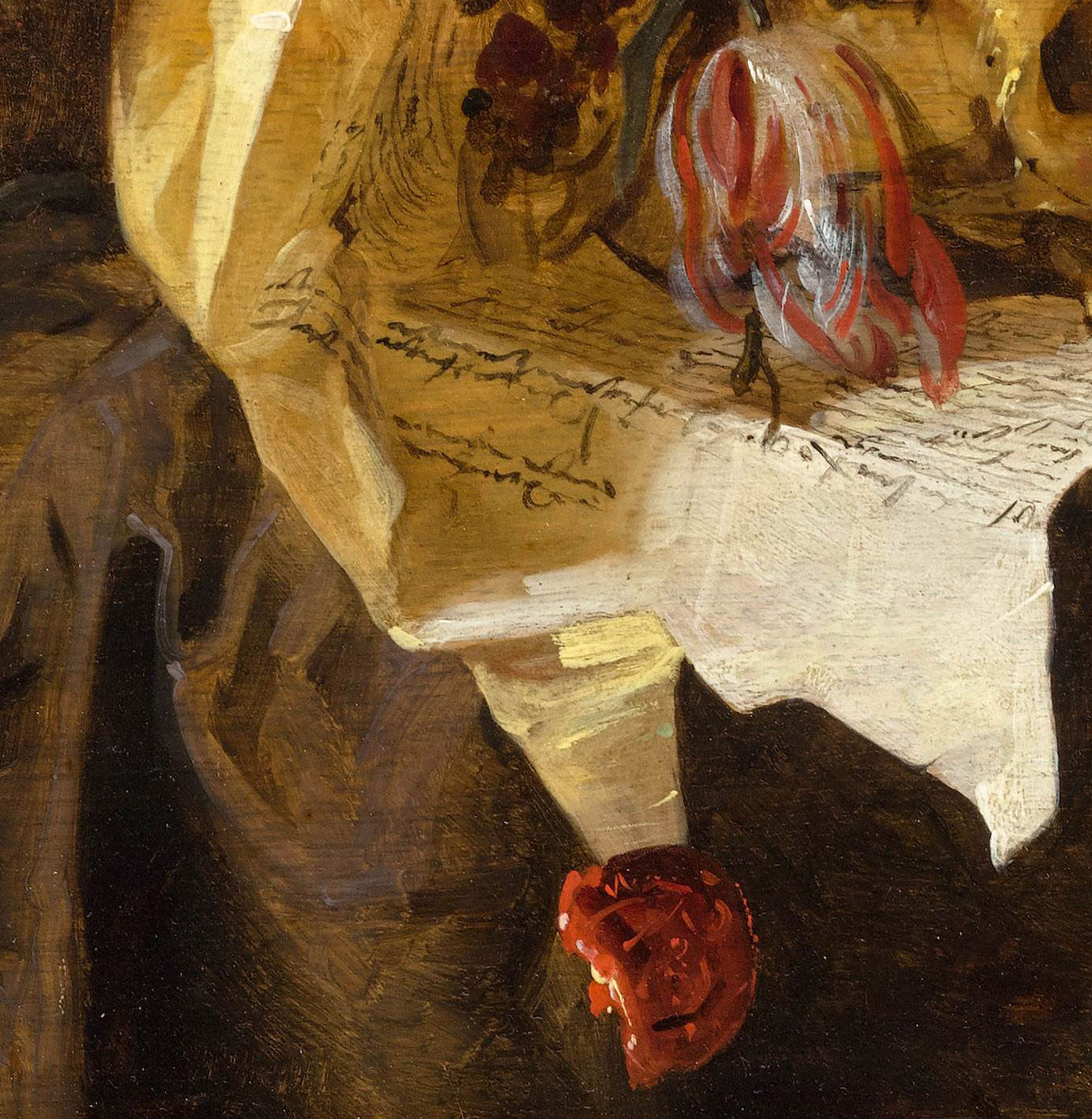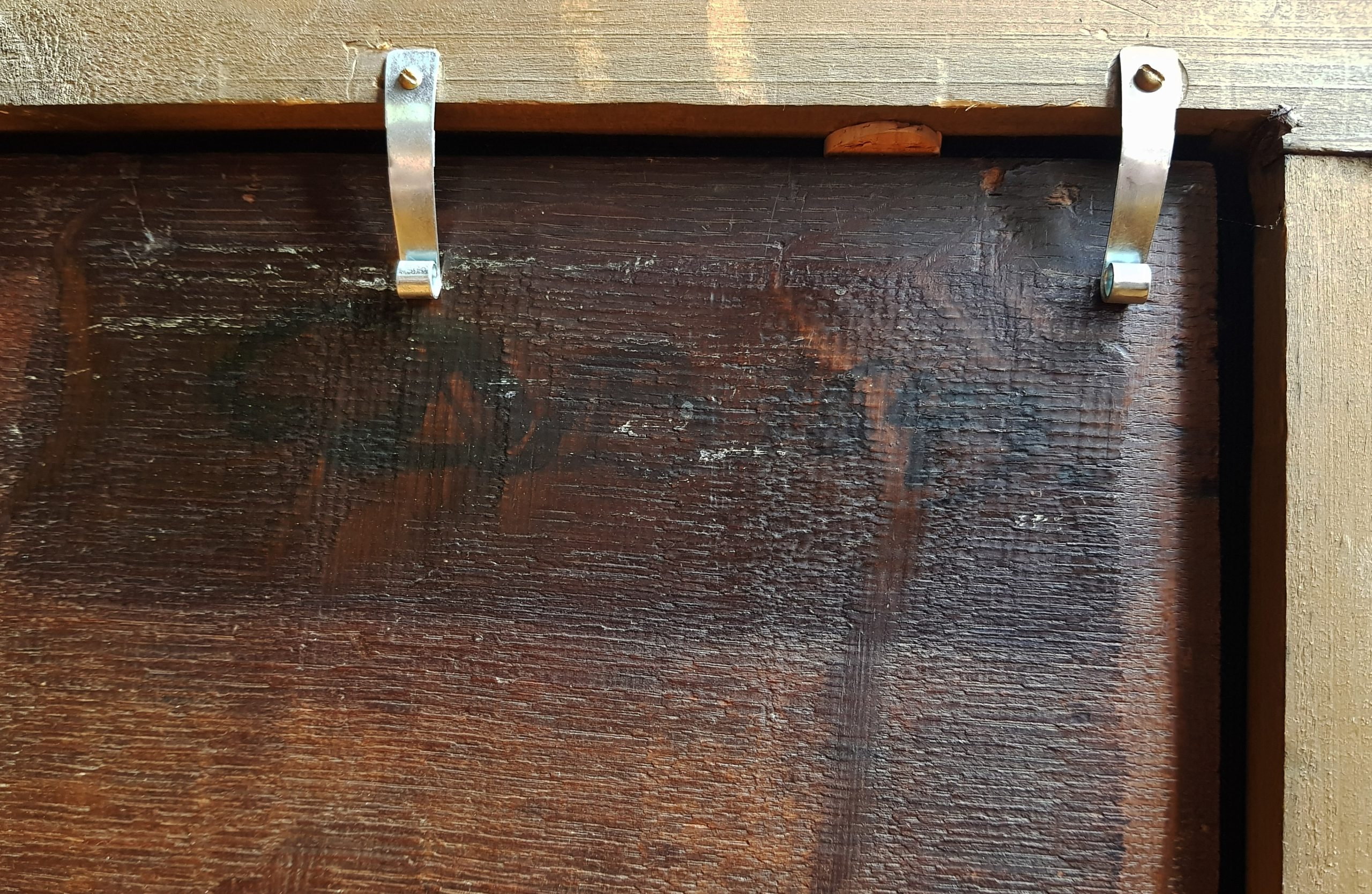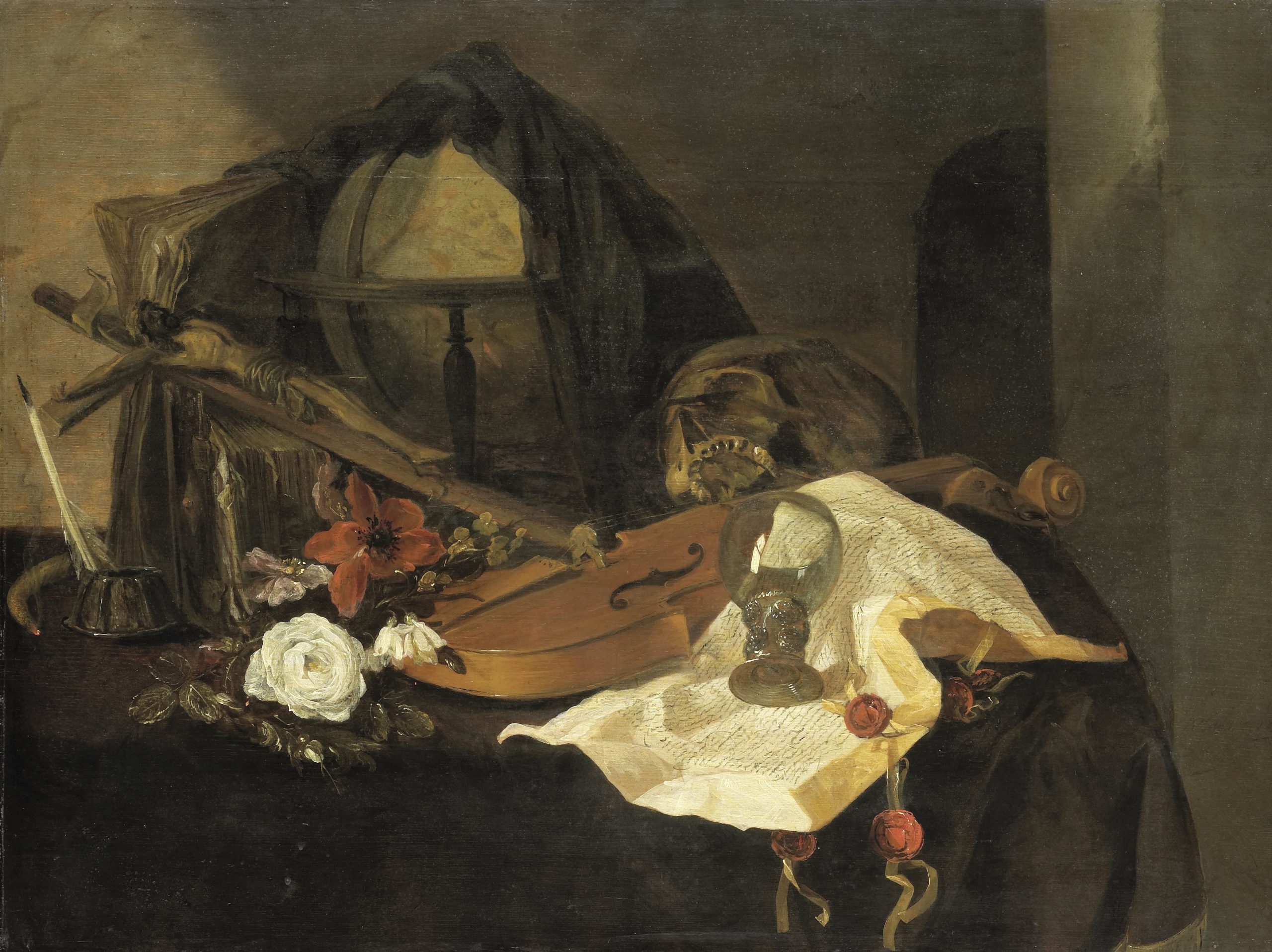JACQUES DE CLAEUW (Dordrecht 1623 – 1694 Leiden)
Jacques de Claeuw (Dordrecht 1623 – 1694 Leiden)
Vanitas still-life with a globe, books, skull, violin, flute, letter and flowers on a draped ledge
Oil on panel, 36.8 x 46.8 cm (14.5 x 18.4 inch); presented in a black frame of 17th-century model
Inscribed with monogram and date ‘[.]DB 1649’ on reverse, possibly applied by the artist.
Provenance
~ Collection Edmond du Robert, Nancy, France, 1954
~ Anonymous sale, Christie’s, London, 3 September 2000, lot 23, repr.
~ With Johnny van Haeften, London, 2002
~ With Otto Naumann, New York
~ With Dr A. Wieg Fine Art, Amsterdam, 2007
~ Private collection, Europe
***
Musical instruments, mighty vellum-bound folios, withering roses and tulips, a globe and an oil lamp, arranged on a table draped with a purple cloth, set against a crudely plastered wall. The brushwork is loose and fluent, spontaneous and even distinctly modern in certain areas, in which the artist displays his virtuoso mastery of paint. The panel has been prepared with a greyish ochre ground layer, its sensitive hue visible throughout the painting and serving as a unifying element. The pigments, mostly earthy colours, browns, umbers and greys, with a flew splashes of white and pink, were generally mixed with oil, the paint handling reminiscent of the watercolour technique.
This is no random arrangement of objects. The human skull is the most obvious reference to the theme of this exceptional painting: Vanitas, the meaninglessness and transience of earthly life. The term comes from the Latin translation of the opening phrases of the Biblical Book of Ecclasiastes: ‘vanitas vanitatum et omnia vanitas’ – vanity of vanities, everything vanity, encouraging the contemplation of the Eternal life instead. Golden Age viewers also attached such meanings to musical instruments, whose fleeting sounds only exist in the moment, and flowers, which retain their beauty only briefly, while the accumulated knowledge of scholars, built up over decades of dedicated study, is useless in the face of death. The society of the seventeenth century was very much aware of the brevity of life, being confronted with frequent plagues, poor medical care and high infant mortality. Memento mori – remember you must die...
Jacques de Claeuw, also known as De Grieff, was born in Dordrecht in 1623.1 He may have served an apprenticeship under Jacob Gerritsz Cuyp (1594–1652), father of the famed landscape painter Aelbert Cuyp. According to De Claeuw’s biographer Arnold Houbraken (1660–1719), he was one of the founders of the Dordrecht guild of St Luke in 1642. Upon becoming an independent master, Jacques moved to The Hague in 1646, where he married Maria van Goyen, daughter of the landscape painter Jan van Goyen (1596–1656) and sister-in-law of the celebrated genre painter Jan Steen (1625/26–1679). De Claeuw would have been very closely connected with both Steen and Van Goyen, and the loose handling and fairly brown palette of the present painting may have been influenced by Van Goyen. One of the couple’s children, Adriaen de Gryeff (1658–1715), became a painter of hunting still-lifes with figures – a typical work by this artist is also in our collection. In 1651 the family moved to Leiden, where Jacques became a member of the guild and remained so until 1665. Maria van Goyen died in 1662, and a year later Jacques married the Portuguese Maria de Cheropy. He moved to the province of Zeeland in 1666 and after this date we only know that he was possibly residing in Haarlem in 1687, and that in 1694 he witnessed the baptism of his grandson, one of Adriaen’s sons, in Leiden. A number of times during his life De Claeuw was burdened by debt.
Jacques de Claeuw painted flower pieces, several still-lifes of fruit, game and meals, but predominantly vanitas still-lifes. Of the thirty or so works by him which are currently known, dated works span the period from 1645 to 1689. A number of his flower pieces were early works, two being dated 1651. His rapid, spontaneous technique of application, alternating fluid and impasto brushstrokes with strong contrasts between light and dark, calls to mind the oeuvre of Abraham van Beyeren, with whom he most likely had contact during the period he lived in The Hague. A painting of a vase with flowers was owned by Jan Miense Molenaer (1609/10–1668), husband of Judith Leyster.
The present painting can be compared to a Vanitas Still-Life in the Rijksmuseum, which is dated 1650 (fig).2 Only a small number of other Vanitas still-lifes by De Claeuw is known, most in museum collections, including examples in the Stedelijk Museum Het Prinsenhof in Delft,3 the Kunstsammlungen der Veste Coburg, Schloss Ehrenburg,4 the Staatliche Kunsthalle in Karlsruhe,5 and in the Cummer Museum of Art & Gardens, Jacksonville, Florida (USA),6 while a further comparable example was with Bob Haboldt & Co in 2009.7 Our work is notable for its beautiful state of preservation and the particularly fluent and spontaneous painting.
The authorship by De Claeuw has been confirmed by Dr Fred Meijer in a letter dated 27 June 2007. Dr Meijer dates the paining to the late 1640s.
Fine examples of De Claeuw's works can be found in museums, like the Bredius Museum in The Hague and the Suermondt-Ludwig-Museum in Aachen. A painting by De Claeuw's son Adriaen de Grijef is also offered by our gallery and can be found here.
RESERVED
1. For the artist, see: J. Buyck, ‘Een Vanitas-stilleven van Jacob Grief, genaamd De Claeuw’, Jaarboek van het Koninklijk Museum voor Schone Kunsten Antwerpen 1962-1963, p. 169-174 and Edwin Buijsen and Charles Dumas (eds.), Haagse schilders in de Gouden Eeuw: het Hoogsteder lexicon van alle schilders werkzaam in Den Haag 1600-1700, The Hague 1998, pp. 109-112, and, in particular, Sam Segal and Klara Alen, Dutch and Flemish Flower Pieces, Leiden/Boston 2020, pp. 475-76.
2. Oil on panel, 54 x 71 cm, inv. no. SK-A-1444; Pieter J.J. van Thiel, All the paintings in the Rijksmuseum in Amsterdam: a completely illustrated catalogue, Amsterdam 1976, p. 169, repr.
3. Oil on panel, 82.5 x 100.5 cm, inv. no. NK 1724, O. ter Kuile, Seventeenth-century north Netherlandish still lifes, The Hague/Amsterdam 1985, pp. 100-101, no. VI-19.
4. Oil on canvas, 73 x 90 cm, signed and dated 1651, H.W. Grohn in Jahrbuch der Coburger Landesstift, 1961, p. 164.
5. Oil on panel, 52.5 x 64.5 cm, signed ‘CLAEUW. F’, inv. no. 765, Jan Lauts, Stilleben alter Meister: I. Niederländer und Deutsche, Karlsruhe 1983, p. 21, no. 10, repr.
6. Oil on canvas, 89 x 123 cm, inv. no. AP.2014.4.1, B.J.A. Renckens, ‘Jacques de Claeuw en Adriaen de Gryseff, vader en zoon’, Kunsthistorische mededelingen van het RKD 4 (1949), p. 13.
7. Oil on panel, 41 x 50.8 cm, signed and dated ‘JDC 1645’, shown at TEFAF, Maastricht, 20009, RKD Images No. 198403.
